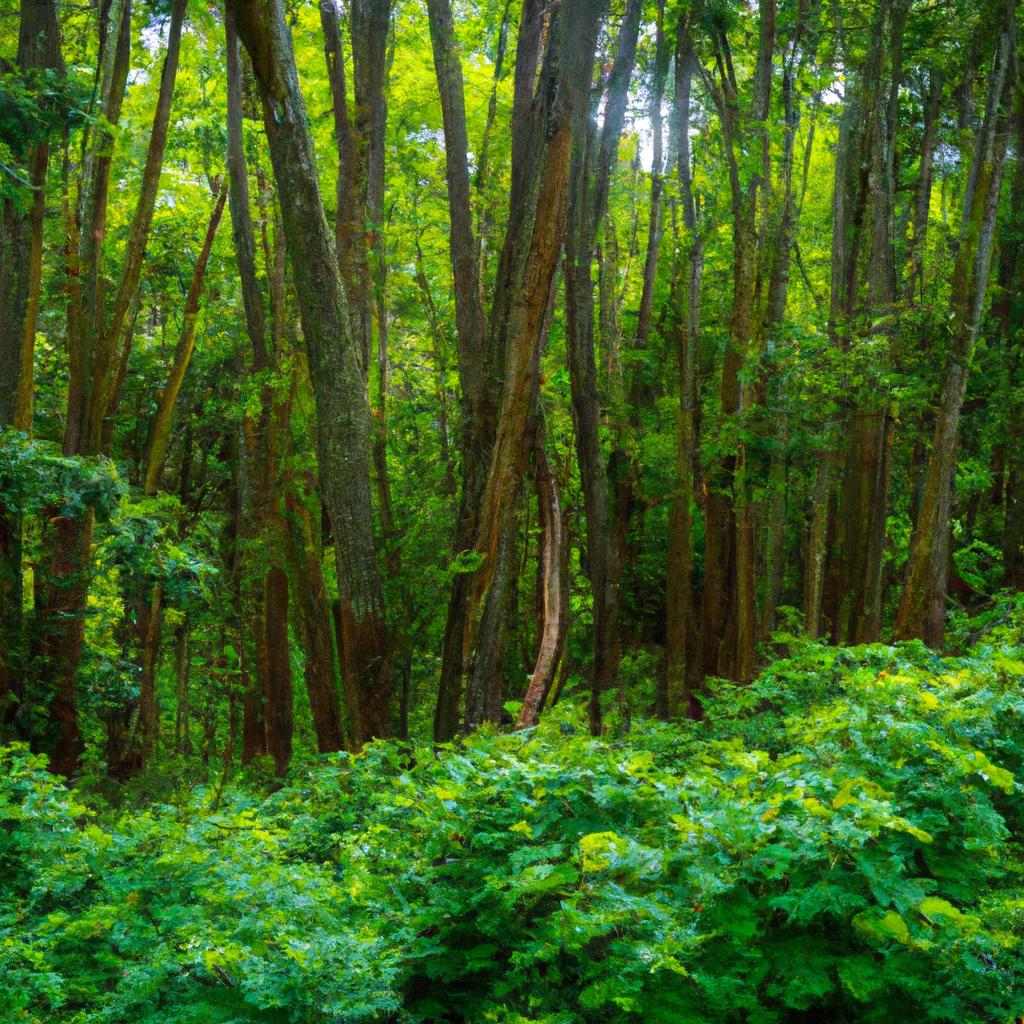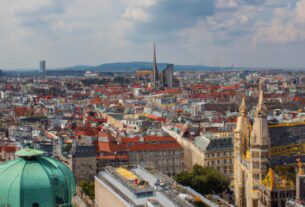Hawaii is a land of breathtaking natural beauty, with its lush and verdant landscape being one of its most iconic features. The islands are home to a diverse array of flora and fauna, from towering palm trees to colorful tropical flowers. However, with the ever-increasing threat of climate change and invasive species, it is more important than ever to preserve Hawaii’s greenery.
Hawaii’s Natural Wonders: A Paradise of Biodiversity
Hawaii is home to an incredible array of flora and fauna, much of which is found nowhere else on earth. From towering palm trees to colorful tropical flowers, the islands are a natural wonderland with a rich variety of plant and animal life.
Flora of Hawaii
Hawaii’s plant life is as diverse as it is beautiful. The islands are home to over 1,000 species of flowering plants, many of which are endemic to the region. One of the most iconic Hawaiian plants is the hibiscus, which can be found in a variety of colors and is often used in leis. Another popular flower is the plumeria, with its sweet fragrance and delicate petals.
In addition to flowers, Hawaii is home to a wide variety of trees. The coconut palm is perhaps the most well-known, with its tall trunk and distinctive fronds. Other notable trees include the monkeypod, which has a unique branching pattern, and the ironwood, which is prized for its durable wood.
Fauna of Hawaii
Hawaii’s animal life is just as diverse as its plant life. The islands are home to a wide variety of bird species, including the Hawaiian goose (or nene) and the colorful honeycreeper. The islands are also home to a number of sea creatures, including green sea turtles and spinner dolphins.
One of the most famous Hawaiian animals is the humpback whale, which migrates to the islands each winter to mate and give birth. Visitors can often see these majestic creatures breaching and playing in the waters off the coast.
Overall, Hawaii’s natural wonders are truly awe-inspiring. From the colorful flowers to the rare bird species, the islands are a paradise of biodiversity that must be protected and preserved.
Ecotourism in Hawaii: Experience Nature Responsibly
Hawaii’s eco-friendly tourism industry has been gaining momentum in recent years, with more and more visitors seeking out sustainable travel options. Eco-tourism is a type of tourism that focuses on responsible travel to natural areas, with the goal of conserving the environment and supporting local communities.
Overview of Hawaii’s Eco-friendly Tourism Industry
Hawaii is home to a wide variety of eco-friendly tourism activities. Visitors can take part in guided hikes through rainforests, go whale watching, or participate in beach cleanups. There are also many eco-friendly accommodations available, from rustic campsites to luxury eco-resorts.
One of the most popular eco-tourism activities in Hawaii is snorkeling and diving. The islands’ crystal-clear waters are home to a diverse array of marine life, including sea turtles, colorful fish, and even dolphins and whales. Many tour companies offer eco-friendly snorkeling and diving trips that focus on minimizing the impact on the marine environment.
Benefits of Ecotourism for Hawaii’s Environment and Economy
Eco-tourism has many benefits for Hawaii’s environment and economy. By promoting responsible travel practices, eco-tourism helps to reduce the impact of tourism on Hawaii’s fragile ecosystems. It also supports the local economy by creating jobs in the tourism sector and promoting the use of local products and services.
In addition, eco-tourism can help to raise awareness about the importance of protecting Hawaii’s environment. By experiencing the beauty and diversity of Hawaii’s natural landscapes firsthand, visitors are more likely to become advocates for conservation efforts and support initiatives aimed at preserving Hawaii’s greenery.
In conclusion, Hawaii’s eco-friendly tourism industry offers a unique opportunity to experience the islands’ natural beauty while also supporting conservation efforts and the local economy. By choosing eco-tourism activities and accommodations, visitors can help to ensure that Hawaii’s greenery remains a paradise worth preserving.
Sustainable Agriculture in Hawaii: Nurturing the Land
Hawaii has a rich history of agriculture, with the first Polynesian settlers cultivating taro, sweet potatoes, and other crops more than a thousand years ago. Over the centuries, the islands have been home to a wide variety of crops, from sugarcane and pineapple to coffee and macadamia nuts. Today, Hawaii’s agricultural sector is more diverse than ever, with a growing emphasis on sustainability and locally-grown produce.
History of Agriculture in Hawaii
Agriculture has played a vital role in Hawaii’s economy and culture for centuries. The early Polynesian settlers relied on farming to survive, and their agricultural practices helped shape the islands’ unique landscape. Later, when Europeans arrived in Hawaii, they brought with them new crops and farming techniques, transforming the islands into a hub of global agriculture.
Throughout the 20th century, Hawaii’s agricultural sector underwent significant changes, with sugarcane and pineapple becoming major cash crops. However, as these industries declined in the late 20th century, Hawaii’s farmers began to shift their focus to new crops and sustainable farming practices.
Current Sustainable Agricultural Practices in Hawaii
Today, Hawaii’s farmers are leading the way in sustainable agriculture, using innovative techniques to reduce water usage, promote soil health, and minimize the use of pesticides and other harmful chemicals. From aquaponics to natural farming, Hawaii’s agricultural sector is constantly evolving to meet the challenges of the 21st century.
One of the most important aspects of sustainable agriculture in Hawaii is the emphasis on locally-grown produce. By buying from local farmers, consumers can reduce their carbon footprint, support the local economy, and enjoy fresh, healthy, and flavorful food.
Importance of Supporting Local Farmers and Buying Locally-Grown Produce
Supporting local farmers is crucial for the future of Hawaii’s agricultural sector. By buying locally-grown produce, consumers can help ensure that Hawaii’s farmers can continue to operate sustainably, preserve the islands’ unique landscape, and provide healthy and delicious food for generations to come. Additionally, buying local reduces transportation costs, which in turn reduces carbon emissions and promotes a more sustainable food system.
In conclusion, sustainable agriculture is a vital component of Hawaii’s economy and culture. By preserving the islands’ agricultural heritage, promoting sustainable farming practices, and supporting local farmers, we can help ensure that Hawaii’s greenery remains a paradise worth preserving.
Protecting Hawaii’s Natural Resources: Safeguarding Paradise
Hawaii’s natural resources are under threat from a variety of sources, including invasive species and climate change. These threats pose a significant risk to the islands’ ecosystem, which in turn affects the tourism industry and the local economy.
Threats to Hawaii’s Environment
Invasive species are one of the biggest threats to Hawaii’s environment. These plants and animals, which are not native to the islands, can cause significant damage to the local ecosystem by outcompeting native species for resources, disrupting natural processes, and even spreading diseases.
Climate change is also a significant threat to Hawaii’s environment. Rising sea levels, more frequent and intense storms, and warmer ocean temperatures all have a significant impact on the islands’ delicate ecosystem. These changes can lead to the loss of habitats, erosion of beaches, and damage to infrastructure.
Efforts to Protect and Preserve Hawaii’s Natural Resources
Efforts are underway to protect and preserve Hawaii’s natural resources. One such effort is the Hawaii Invasive Species Council, which is working to control and eradicate invasive species across the islands. The council’s work includes research, education, and outreach to the public.
Another important initiative is the Hawaii Climate Change Mitigation and Adaptation Commission, which is working to reduce the impact of climate change on the islands. The commission is developing strategies to reduce greenhouse gas emissions, promote sustainable practices, and adapt to the changing climate.
Ways Individuals Can Get Involved in Conservation Efforts
Individuals can play a significant role in conservation efforts in Hawaii. One way to get involved is to support local organizations working to protect the islands’ natural resources, such as the Nature Conservancy of Hawaii or the Hawaii Wildlife Fund. Another way is to participate in beach cleanups or volunteer with conservation groups.
By working together to protect Hawaii’s natural resources, we can ensure that the islands remain a paradise for generations to come.
Conclusion: A Paradise Worth Preserving
In conclusion, Hawaii’s greenery is a precious resource that must be protected and preserved. From its stunning beaches to its lush forests, the islands are home to some of the world’s most beautiful natural wonders. But with the threat of climate change and invasive species, we must take action to ensure that Hawaii’s greenery remains intact.
Through sustainable tourism, conservation efforts, and responsible agricultural practices, we can work together to safeguard Hawaii’s natural beauty for generations to come. By supporting local farmers, buying locally-grown produce, and reducing our carbon footprint, we can make a positive impact on the environment and help preserve Hawaii’s greenery.
As a brand that values nature and conservation, TooLacks encourages you to take action to protect Hawaii’s greenery. Whether it’s through supporting conservation organizations, practicing sustainable tourism, or simply being mindful of the impact we have on the environment, we all have a role to play in preserving Hawaii’s natural beauty. Let’s work together to ensure that Hawaii’s greenery remains a paradise worth preserving.
Citations:
- “Hawaii’s Threatened Environment: Turning the Tide.” The Nature Conservancy.
- “Hawaii Agriculture and Food System.” Hawaii Department of Agriculture.



